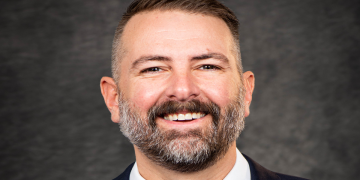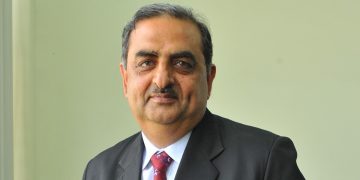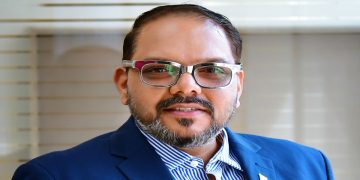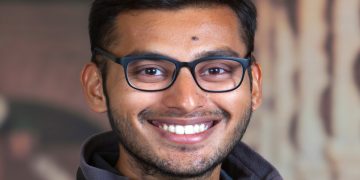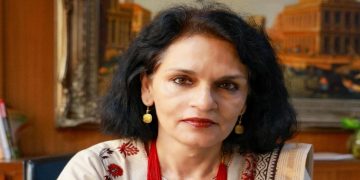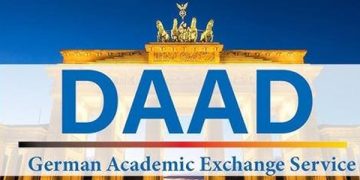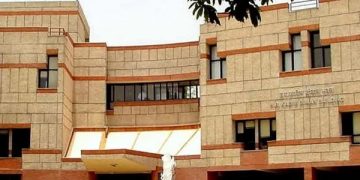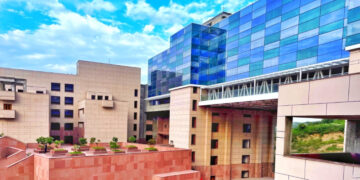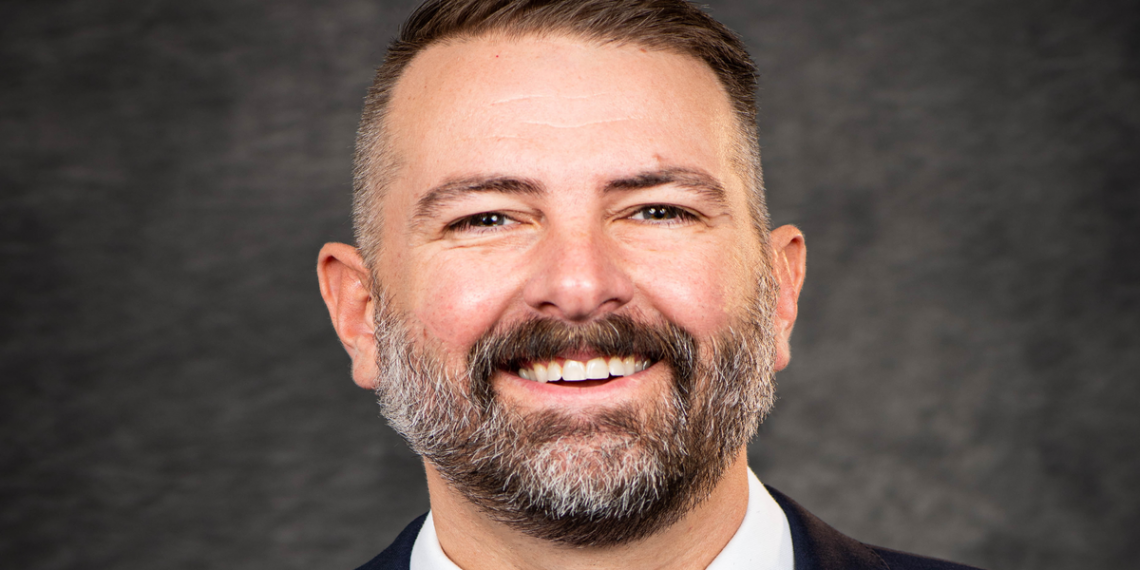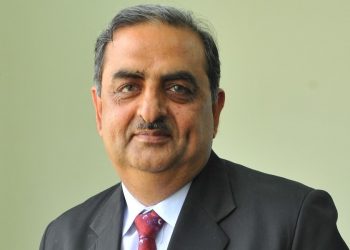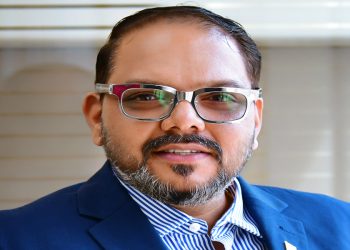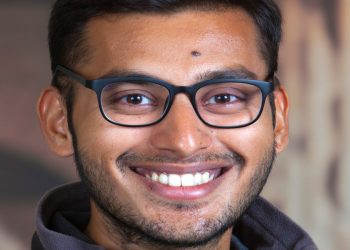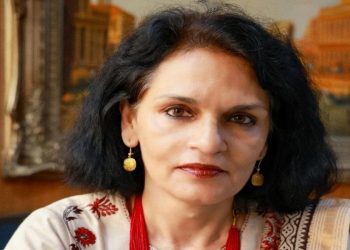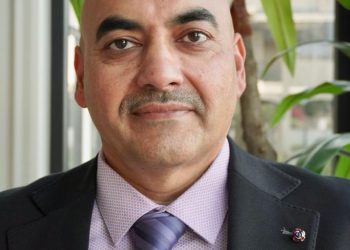Dr Caleb Simmons, Vice Provost for Online Education at the University of Arizona, is at the
forefront of shaping the future of digital learning. With a vision rooted in accessibility,
innovation, and academic integrity, he shares his insights on the evolving landscape of online
higher education, the University’s global partnerships, and the integration of cutting-edge
technologies such as AI, VR, and XR. In this exclusive interview, Dr Simmons discusses the
opportunities and challenges ahead, emphasising that the future of education is not a question of
online versus on-campus, but rather about offering students flexibility, choice, and lifelong
pathways to learning.
1. How do you see the landscape of online higher education evolving over the next five years?
We’re standing at a moment where online higher education is no longer the “alternative”
pathway — it’s becoming the front door to higher education for millions of learners. In the next
five years, I see us moving toward an ecosystem where micro-credentials, stackable pathways,
and non-credit-to-credit bridges aren’t the exception, they’re the expectation. The technology is
ready. AI, adaptive learning, and immersive environments will allow us to deliver deeply
personalised learning at scale, but the real shift has to be cultural. Institutions that embrace
flexibility and a future-focused mindset will lead the way. At Arizona, that means building on
our land-grant promise: reaching learners where they are, whether that’s in a rural Arizona
community, a major U.S. city, or halfway around the world.
2. What strategic vision drives Arizona Online’s growth, and how do you ensure academic integrity and learner engagement in a digital-first model?
Our strategic vision is simple but ambitious: meet learners where they are and take them where
they want to go. Arizona Online exists to expand access without sacrificing quality. With every
programme, we are intentional in looking to workforce demand and designing for the realities of
our learners’ lives. We don’t chase growth for growth’s sake. We build sustainable, high-quality
programmes in partnership with faculty across the University’s academic colleges. Academic
integrity isn’t an afterthought — it’s embedded from day one through our course design, faculty
oversight, and clear expectations. And engagement? That’s the heart of it. We use research-
backed design, encourage visible and present faculty, and create opportunities for real connection
to make sure students feel part of the Arizona community, even if they never set foot on campus.
3. How is the University of Arizona aligning itself with global trends in online education to attract a diverse, international student body?
The future of higher education is borderless, and we’re leaning into that. We’re aligning with
global trends by building intentional partnerships that connect our strengths to international
demand. Take India, for example — we’re creating 3+1 pathways, accelerated master’s
programmes, and research collaborations with institutions ranging from IITs to smaller private
colleges and universities that meet both local workforce needs and global academic standards.
We’re also expanding multilingual programme delivery, leveraging Arizona’s global brand in
disciplines like optics, public health, and environmental science, and working with MOOC
platforms to bring our programmes to learners who might never have considered a U.S. degree.
The goal is not just to attract students, but to build relationships that open doors for learning,
research, and innovation on both sides.
4. What steps are being taken to bridge the digital divide for students from underserved or remote areas enrolling in online programmes?
The digital divide is one of the biggest and growing issues of our time, and as a land-grant
institution, we see it as our responsibility to help close it. We partner with state agencies and
regional learning centres to create physical access points for students without reliable internet.
We are also designing courses with mobile-first features because we know that many learners
now need to access their courses on a mobile phone or other portable device. We’ve also worked
with partners on campus to extend our device loan programmes to include our online students
because access to technology is no longer optional for education — it’s foundational.
5. How do you address concerns around the credibility and recognition of online degrees and certificates, especially in the global job market?
At Arizona Online, there is no “online degree” — there is simply a degree from the University of
Arizona. Same faculty, same curriculum, same diploma. That’s a message we reinforce with
students, employers, and partners worldwide. Beyond that, we’re working to embed industry-
recognised micro-credentials into our broader portfolio, offering applied learning opportunities,
and ensuring we are there for all learners, no matter their academic and professional goals. Our
alumni are our best proof point. They’re succeeding in Fortune 500 companies, launching
businesses, and making an impact globally, all with credentials earned through Arizona Online.
6. What mechanisms are in place to ensure online programmes maintain the same rigour and academic quality as on-campus courses?
As part of the broader University academic ecosystem, we have a faculty-driven quality
assurance process that ensures every course meets the highest academic standards. Additionally,
every Arizona Online course goes through additional quality checks and is required to meet a
high threshold of rigour and engagement before being approved for our modality, including
internal guidelines and external standards like Quality Matters Review. That means every course
is aligned with clearly stated learning outcomes, peer-reviewed, and designed with evidence-
based practices. We don’t “transfer” a course online — we design it for the medium. And we
revisit courses regularly, using student performance data, satisfaction surveys, and faculty
feedback to ensure they stay current and rigorous.
7. What initiatives has Arizona Online undertaken to prepare faculty for the shift to immersive and effective online teaching?
Faculty success is student success. We’ve built a development ecosystem that includes training
on online pedagogy, multimedia engagement, and emerging technologies. Our faculty work one-
on-one with instructional designers to craft courses that reflect their expertise while engaging
digital learners. We also encourage faculty partnership for pilots and experimentation with
immersive technologies like VR and AR, giving instructors the space, tools, and support to
innovate.
8. Could you elaborate on how AR, VR, XR, and the Metaversity Framework are being integrated into the Arizona Online ecosystem?
We’re moving beyond “online” as just a screen experience. Our framework is building persistent
virtual spaces where students can attend class, collaborate on projects, and participate in campus
life without ever leaving home. In health sciences, students practise patient interactions in virtual
clinical settings. In engineering, we are working to build VR labs. In the Humanities, they can
“study abroad” by visiting historic sites, like the Seven Wonders of Ancient Greece, virtually.
The point isn’t the technology itself, but using it to create meaningful and memorable
experiential learning opportunities.
9. In what ways do you see Artificial Intelligence transforming online learning experiences, assessment models, and personalised learning paths?
AI is the biggest shift in education since the internet. Done well, it will allow us to create
learning environments that adapt to a student’s pace, mastery, and goals in real time. AI can flag
a struggling student before they disappear, recommend the right resource at the right moment,
and even generate formative feedback at scale. For faculty, it can be a force multiplier, freeing
them from repetitive tasks so they can focus on mentorship and high-impact teaching. We’re
already piloting AI-driven tools that personalise recruitment, improve accessibility, and deepen
engagement.
10. How is student engagement, community-building, and wellbeing addressed in a fully digital university environment?
Belonging is the antidote to attrition. We strive to build community intentionally into everything
we do, from engaging applied learning in courses to virtual touchpoints like clubs, career fairs,
and mentoring programmes. Every Arizona Online student has access to advising, tutoring,
counselling, and career services from day one, all online. And we listen, collecting feedback
constantly and adapting to meet the needs of our learners. The goal is for every student, no
matter where they are in the world, to feel like they’re part of the Wildcat community.
11. How does Arizona Online promote interdisciplinary education, especially in programmes like Religious Studies and Interdisciplinary Studies?
Interdisciplinary thinking is the future of problem-solving. Our Interdisciplinary Studies
programme lets students build a degree that crosses fields — pairing, for example, business with
environmental science or public health with cultural studies. I know the value of
interdisciplinarity from my own academic background in Religious Studies. The content of my
courses and my research come alive when viewed from a nexus of history, philosophy, and art,
helping students develop global awareness and critical thinking skills that employers value. One
of my goals is to design pathways so students can see how knowledge connects across
disciplines and how it applies to real-world challenges.
12. As a CUES Distinguished Fellow, what have been your key findings in research on online pedagogy, and how are they being applied?
One of the clearest findings from my research is that production quality does matter. Not because
it looks pretty, but because when it’s done well, it captures the learner’s attention and keeps them
engaged. High-quality video, clear audio, and thoughtful visuals create a professional
environment that signals to students, “This matters, and so do you.” But production quality alone
isn’t enough. It has to be paired with well-thought-out content that follows sound course design
principles, connecting every element back to clearly defined learning outcomes, engaging students actively, and building towards real skills and knowledge creation. At Arizona Online,
we’ve built these principles into our development process so that every course we launch is not
just visually strong but pedagogically powerful.
13. Are there any active collaborations or partnerships with international universities or edtech companies to expand online education reach and quality?
Absolutely. We’re working with leading institutions in India, Latin America, and Europe on joint
degrees, articulation agreements, and research collaborations. We’ve partnered with platforms
like Coursera to scale access to our programmes, reaching learners in over 100 countries. These
collaborations are designed to be two-way streets — we share our strengths and learn from our
partners to continually improve what we offer.
14. How is Arizona Online catering to adult learners and professionals seeking continuous upskilling or career transitions?
Adult learners are at the heart of what we do. We offer a variety of course lengths for flexibility,
work to expand our prior learning assessment to give credit for experience, and provide clear
pathways from certificates to degrees. Our non-credit programmes are built with industry in
mind, and we are working to make it possible for many of them to be applied towards a degree
later. We also align our offerings with state and regional workforce needs, so students can see a
direct connection between what they’re learning and where they want to go professionally.
15. Finally, what does the future of higher education look like to you? Will online learning become the dominant or complementary mode of delivery?
The future isn’t online versus on-campus; it’s providing the full spectrum of modalities to meet
students where they are. Students will expect to move between modalities as life demands.
Online will be the backbone because it offers flexibility and access, but we will continue to need
in-person and hybrid experiences to serve learners who learn best in those modalities. I see a
future where learning is lifelong, credentials are stackable, and the university is a partner at every
stage of a person’s career and life.
Dr Caleb Simmons envisions a higher education system that is inclusive, flexible, and global. By
embracing technological innovation while safeguarding rigour and quality, Arizona Online is
redefining what it means to be a world-class university in the digital era. His insights make one
thing clear: the future of learning will not be defined by boundaries — geographical or digital —
but by the ability to empower learners at every stage of their journey.


